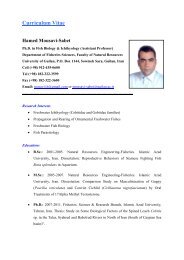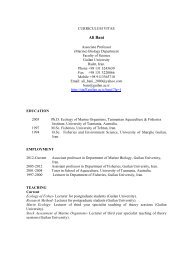Medical Tourism in Developing Countries
Medical Tourism in Developing Countries
Medical Tourism in Developing Countries
- No tags were found...
You also want an ePaper? Increase the reach of your titles
YUMPU automatically turns print PDFs into web optimized ePapers that Google loves.
74 ● <strong>Medical</strong> <strong>Tourism</strong> <strong>in</strong> Develop<strong>in</strong>g <strong>Countries</strong>functions <strong>in</strong>clude coord<strong>in</strong>ation with tour operators and the national airl<strong>in</strong>e.SERVIMED also developed 42 centers—health resorts l<strong>in</strong>ked to surround<strong>in</strong>ghospitals that provide surgical and rehabilitative treatments. 36 Build<strong>in</strong>gbus<strong>in</strong>ess ventures with hotels and build<strong>in</strong>g medical resorts and villages thatserve as “off-shore medical centers,” all required a tremendous amount ofcooperation between departments. Such cooperation enabled Cuba to developa successful export strategy of l<strong>in</strong>k<strong>in</strong>g health care with tourism. 37The Private SectorThe active <strong>in</strong>volvement of the public sector <strong>in</strong> medical tourism maygive the erroneous impression that governments do not encourage the privatesector. With the exception of Cuba, authorities <strong>in</strong> develop<strong>in</strong>g countrieshave realized that private bus<strong>in</strong>ess tends to be dynamic and adaptable; ittends to respond quickly to technological change and f<strong>in</strong>ancial <strong>in</strong>centives,both at the level of transnational corporations, as well as at the level ofmicro bus<strong>in</strong>esses.The private sector has traditionally been stronger than the public sector<strong>in</strong> services, so it comes as no surprise that it dom<strong>in</strong>ates <strong>in</strong> the tourism<strong>in</strong>dustry. The World Bank takes a strong position on the role of the privatesector <strong>in</strong> tourism, giv<strong>in</strong>g it supremacy over the public sector: “While tourismdevelopment is predom<strong>in</strong>antly a private sector activity,” partnershipwith governments must be effective to ensure maximum benefit to the localpopulation. Heed<strong>in</strong>g the World Bank position, numerous countries havetourism policies such as the one announced <strong>in</strong> India <strong>in</strong> 2001, namely“government-led, private-sector driven and community-welfare oriented[italics m<strong>in</strong>e].” 38 The governments of southern African countries (with theexception of Angola) have together formulated a tourism policy <strong>in</strong> whichthe role of the private sector is recognized <strong>in</strong> f<strong>in</strong>anc<strong>in</strong>g and implement<strong>in</strong>gfuture developments. 39 In Jordan, the lack of sufficient private sectorleadership is viewed as the pr<strong>in</strong>cipal obstacle to the development of thetourist sector. 40In part, medical tourism services consist of the health sector that hastraditionally been under public control and which, as noted above, is politicallyhighly sensitive. Nevertheless, with the exception of Cuba, economicactivity <strong>in</strong> medical tourism is currently generated by both private andpublic sectors as all countries under study have parallel private and publichealth-care systems. These <strong>in</strong>clude hospitals, cl<strong>in</strong>ics, diagnostic centers,treatment centers, and nurs<strong>in</strong>g homes. In Malaysia some 80 percent ofhealth care is provided by the public sector. The private sector is grow<strong>in</strong>grapidly, and offers mostly curative and rehabilitation services. It is f<strong>in</strong>anced
















